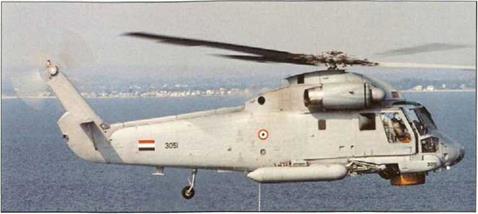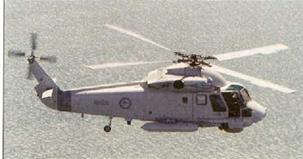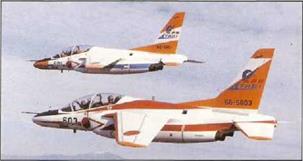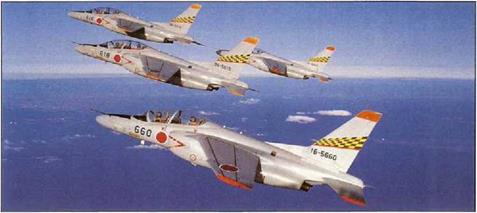Kaman SH-2 Seasprite

![Kaman SH-2 Seasprite Подпись: Specification: Kaman SH-2G Seasprite Powerplant: two ' 28b kW (1.723 hp} Geoe'al Electric T700-GF 401 turboshafts Dimensions: main rotor diameter 1341 m (44 ft); length overall, rotor turning IB m (52 ft 6 in], fuselage 12.3£ m (40 tt 5 in); heig.it overall 4.62 m (15 ft 2 in] Weights: empty 4173 kg 19.200 lb); maximum take-uff Є124кд 113,500 lb) Performance: maximum level speed 255 kmh (159 mph); maximum rate of climb at sea leve 762 m (2.500 it) per minute, hovering ceiling 6350 m (20.800 ft) IGE. and 5486 m (18,000 ft) 0GE; maximum range 885 km (500 miles) Armament: provision for two ASW torpedoes](/img/1244/image136.gif) |
 |
|
A |
veteran of the Vietnam war, and almost retired from US Navy service, Kaman’s venerable SH-2 Seasprite is enjoying a new lease of life. Though the original design dates to the 1950s the Seasprite has found a new niche for itself as a compact shipboard helicopter, with advanced on-board systems.
The prototype SH-2 flew as the HU2K-1 in July 1959, the first Kaman helicopter to have a conventional rotor configuration. The H-2 designation was applied in October 1962 ana Kaman built 100 single- engined UH-2Ar and UH-2B aircraft for the US Navy. In 1970 the redesigned, twin-engined SH-2D was adopted for the ASW role, as the Navy’s LAMPS aircraft – a small helicopter capable of operating from the decks of smaller frigates and destroyers. The definitive LAMPS I version was tho SH-2F Seasprite, which entered service in 1973. This version was powered by two General Electric T58-GE-8F turboshafts, and was fitted with an LN 66HP search radar, a towed MAD, side-mounted sonobuoy rack, tactical mission system. In 1981 Kaman re-opened the Seasprite line to build 60 new SH-2Fs for the USN
In 1985 the Navy began to upgrade its SH-2Fs to SH-2G Super Seasprite standard, re-engining them with T700 turboshafts and significantly increasing performance. The first SH-2F testbed flew in April 1985 and the first production-standard SH-2G conversion flew in March 1990. During the mid- to Iate-I990s the US Navy began to retire
Egypt has acquired 10 SH-2G(E)s to operate from its former-US Navy ‘Knox’-class frigates. The Seasprites are equipped with a dipping sonar.
many of the Oder, smaller vessels which deployed SH-2s, and the Seasprite’s place in the feet was increasingly taken over by the Sikorsky SH-60. Currently the US Navy has just two Reserve squadrons equipped with the SH-2G,
However, the surplus of ex-US Navy aircraft allowed Kaman to embark on an aggressive export sales campaign with the Seasprite. In February 1995 Egypt ordered 10 SH-2(GE)s – remanufactured from SH-2F airframes – and they were delivered in 1997/98. Australia has ordered 11 SH-2G(A)s to operate from its ANZAC class and FFG frigates. The first (remanufactured) SH-2G(A) flew in October 1999 and the first delivery was made to the reformed No 805 Sqn in March 2001 The Australian aircraft are fitted with the Litton ITAS advanced cockpit and mission system. The Royal New Zealand Navy has ordered five new-bude SH-2G(NZ)s and deliveries began in 2001. An interim batch of four unmodified SH-2Fs was acquired to provide training and familiarisation before the RNZN’s Super Seaspiites were delivered.
New Zealand took delivery of four Т-58-powered SH-2F Seaspiites as a ‘bridging loan’ until its full – standard SH-2G(NZ) aircraft could be delivered.
|
G |

iven the unflattering NATO code-name ‘Hokum’, the Ka-50 was developed as a rival to the Mil Mi-28 in the competition to provide в new battlefield he icopter for the Soviet armed forces. Realising that it would be difficult to achieve АЧ-64 levels of performance with existing Soviet technology and equipment, Kamov followed an individualistic course, retaining its trademark coaxial contra-rotating rotor configuration. This was felt to give a more compact, more agile airframe, and to reduce vulnerability to hostile fire. To minimise weight, Kamov also decided to design a single-seat helicopter, using the contra-rotating coaxial’s inherently good handling characteristics to make this possible, and drawing on its experience of sophisticated auto-hover systems on Kamov’s naval helicopters, The single- pilot cockpit was successfully demonstrated on the testbench, and in a modified Ka-29TB. A novel feature rs the pilot’s Severin/Zvezda K-37 ejection seat. The ejection sequence begins with automatic rotor separation, then jettisons the doors before a rocket pack drags the seat from the helicopter.
The A80 prototype made its maiden flight on 27 July 1982. The competitive evaluation ended in October 1986 and the Ka-50 was reportedly selected in preference to the Mil Mi-28, although the
requirement was then revised, leading to a new competition between the night-attack optimised Mi-28N and the Ka-5ON,’Ka-50Sh, wnic’n feature advanced new avionics.
Customer resistance has led to the development of a number of two-seat derivatives of the Ka-50, including the tardem-seat Ka-50-2 end Ka-50-2 Erdogan (this to meet a Turkish requirement) and the Ka-52 Alligator, with side-by-side seats, a mast – and roof-mounted sighting system and advanced night attack systems.
The tube-launched, laser-beam-riding Vikhr (NATO АТ-Э ‘Whirlwind’) missile forms the Ka-bO’s primary armament. Sixteen can be carried, augmented by the built-in 30-mm cannon. Developed for the BMP AFV, the gun has variable rates of fire and selective feed from two 250-round ammunition boxes. The gun is installed on the starboard side of the fuselage below the wing root and is electro- hydraulically driven and can be traversed through 30° in elevation, and can also move 155 in azimuth. Combat survivability is enhanced by the IR suppres sors in the exhaust assemblies, the heavily armoured pressurised cockpit, the foam-filled, selfsealing fuel tanks. Wingtip pods house chaff/flare dispensers.
 Specification: Kamov Ka-50 Powcrplant: two 1650-kVV {2.22o-hp) Klimov (I sow) TV3-1 )7VK turboshafts Dimensions: rotor diameter, each 14.50 m (45 (t 6.9 in), length overall, rotors turning 15.00 її (52 ft 5.9 irj. and fuse ape excluding probe anrl g. m 13.50 in (44II 3/ in); height 5.40 m Г / ft 0.6 in)
Specification: Kamov Ka-50 Powcrplant: two 1650-kVV {2.22o-hp) Klimov (I sow) TV3-1 )7VK turboshafts Dimensions: rotor diameter, each 14.50 m (45 (t 6.9 in), length overall, rotors turning 15.00 її (52 ft 5.9 irj. and fuse ape excluding probe anrl g. m 13.50 in (44II 3/ in); height 5.40 m Г / ft 0.6 in)
Weights: maximum take-off 7500 kg 116,534 lb) Performance: maximum level speed 350 krh (217 mph) maximum vertical rate of climb at 2500 m (8,200 ft) 600 m (1.969 ft) per minute, hovering ceiling 4DC0 m (13,125 ft) OGE; combat radus about 250 km (155 miles) Armament: one 2A12 30-mm cannon with two 250-round drums, plus 3000-kg (6,610-lb) stores
Japan
![]() Basic/advanced training aircraft
Basic/advanced training aircraft
|
|
T |
he Kawasaki T-4 rs an intermediate jet trainer to replace the Lockheed T-33 and Fuji T-1 A/В. Design studies were completed in 1983 and *’our prototypes (designated XT-4) were funded in 1984. The first of these made its maiden fight on 29 July 1985. The T-4 is a conventional design, featuring high subsonic manoeuvrability and docile handling characteristics. It shares a similar high-wing configuration to the Dassault-Dornier Alpha Jet. to which it bears s similar appearance – with pronounced anhedral on the wings and tailplane, and large ‘dog tooth’ leading edges. Visibility for both instructor and pupil is excellent, with a frameless wraparound windscreen and a one-piece canopy, For its secondary liaison role, the T-4 has a baggage compartment fitted in the centre fuselage with external access via a door in the port side.
The T-4 is a collaborative venture, in which Fuji builds the rear fuselage, supercritical section wings and tail unit, and Mitsubishi constructs the centre fuselage and air intakes, Kawasaki builds only the forward fuselage, but is responsible for final assembly and flight test. Virtually all components are indigenously built, and most are locally designed, including the Ishikawajima-Harima F3-IHI-30 turbofan engines. A single underwing pylon on each side can accommodate a 450-litre <99-lmp gal) drop tank, and a centreline pylon can be fitted for a target towing winch, air sampling pod, ECM pod or chaff dispenser.
T-4 production deliveries began in September 1988, to meet an original Japan Air Self Defence Force requirement for some 200 aircraft, replacing the T-33 and Fuji T-1 in the basic training role. By mid-January 2001 212 T-4s had been funded The T-4 is today in service with Nos 31 and 32 Squadrons of No. 1 Air Wing at Hamamatsu, and with some operational squadrons and wings as a liaison aircraft, sometimes wearing the same camouflage scheme and unit markings as the operational aircraft. Nine aircraft serve with the Blue Impulse aerobatic team (No.11 Squadron. No.4 Wing), having replaced T-2s in 1994. These aircraft are modified to carry smoke generators and also have a re-inforced canopy, a revised rudder limiter system, ground-proximity warning system end additional cockpit lighting and instruments to aid aerobatic flight.
An advanced version of the T-4, with more powerful engines and improved avionics, has been offered to the JASDF to replace the ageing and uneconomical T-2 in the advanced training role.
The first and third T-4 prototypes are seen here in the markings of the TRDl development and test wing, where they are retained for trials flying.
|












